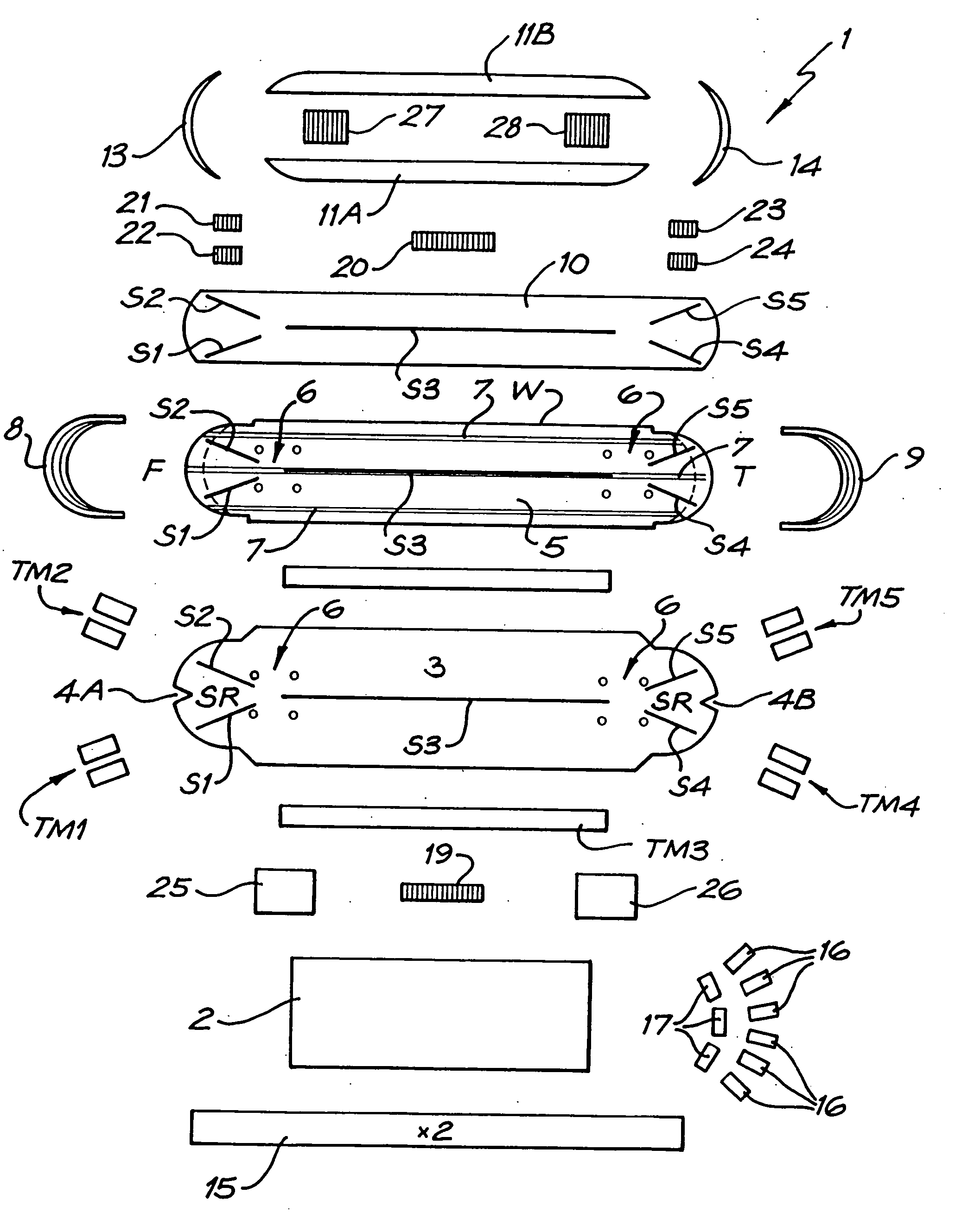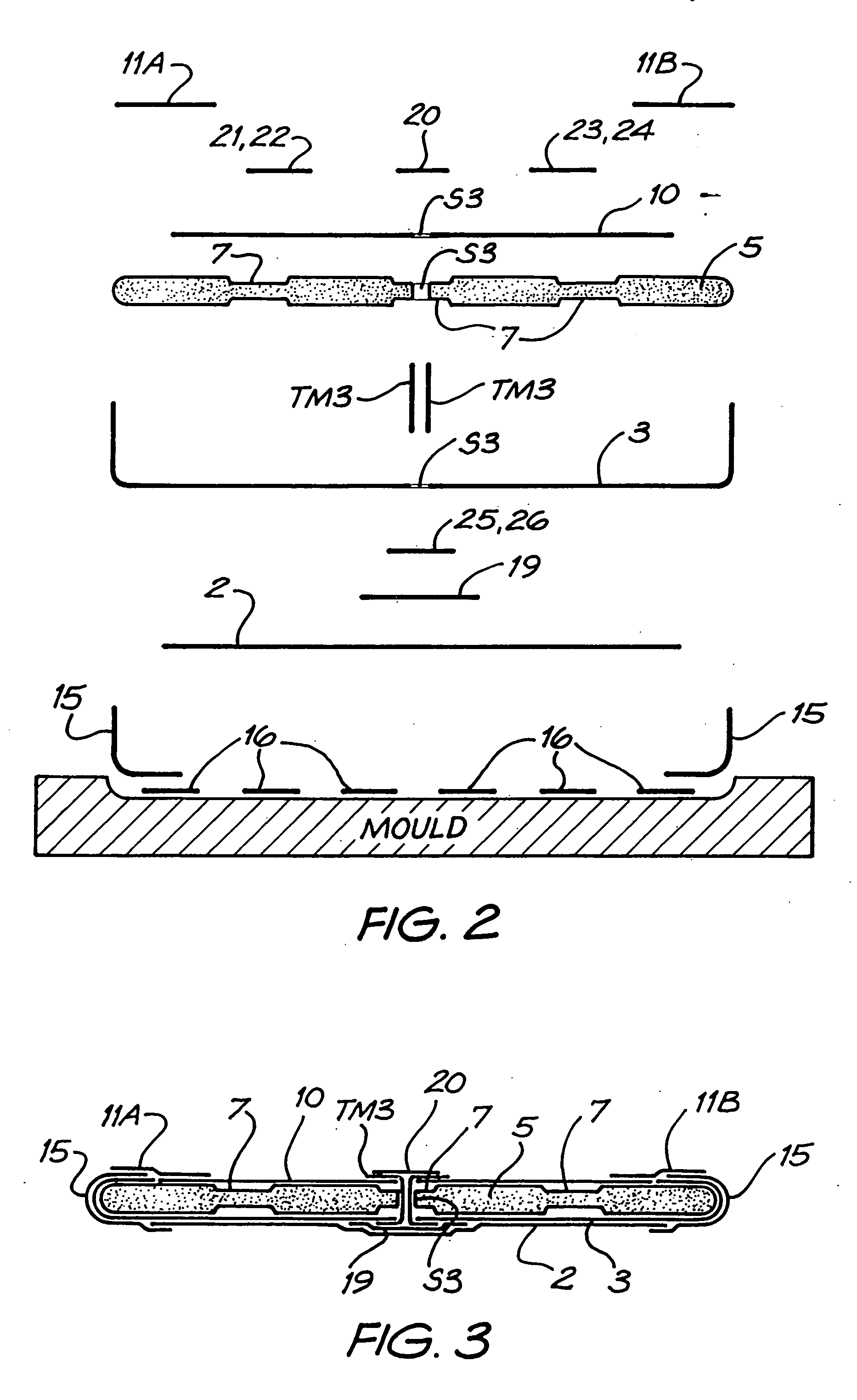Composite board and process for making the board
a composite board and process technology, applied in the field of composite boards and a process for making the board, can solve the problems of limited the manufacturers of maple boards have continually attempted to improve the “pop” of the skateboard with limited success
- Summary
- Abstract
- Description
- Claims
- Application Information
AI Technical Summary
Benefits of technology
Problems solved by technology
Method used
Image
Examples
Embodiment Construction
[0043] The composite board described in the following suitably forms a deck of a skateboard, the deck forming a platform for supporting the rider with the underside of the deck being provided with fore and aft trucks secured to the deck toward and spaced away from the ends of the deck and which enable the rider to direct the skateboard. Each truck suitably has an axle fixed therein, the skateboard wheels being carried on distal portions of the truck axle, the wheels carrying bearings and which rotate about the axle. The truck suitably provides for tilting movement of the axle about a mounting axis.
[0044] Referring to FIGS. 1 to 3, which are not drawn to scale, various components of a skateboard deck 1 having a front end F and a tail end T in accordance with a preferred embodiment are shown. The skateboard deck 1 includes a first bottom layer 2 forming the bottom surface of the deck 1 and which is suitably formed from 280 grain unidirectional R-glass manufactured by Hexcel-Texas and...
PUM
| Property | Measurement | Unit |
|---|---|---|
| shear modulus | aaaaa | aaaaa |
| shear strength | aaaaa | aaaaa |
| tensile strength | aaaaa | aaaaa |
Abstract
Description
Claims
Application Information
 Login to View More
Login to View More - R&D
- Intellectual Property
- Life Sciences
- Materials
- Tech Scout
- Unparalleled Data Quality
- Higher Quality Content
- 60% Fewer Hallucinations
Browse by: Latest US Patents, China's latest patents, Technical Efficacy Thesaurus, Application Domain, Technology Topic, Popular Technical Reports.
© 2025 PatSnap. All rights reserved.Legal|Privacy policy|Modern Slavery Act Transparency Statement|Sitemap|About US| Contact US: help@patsnap.com



